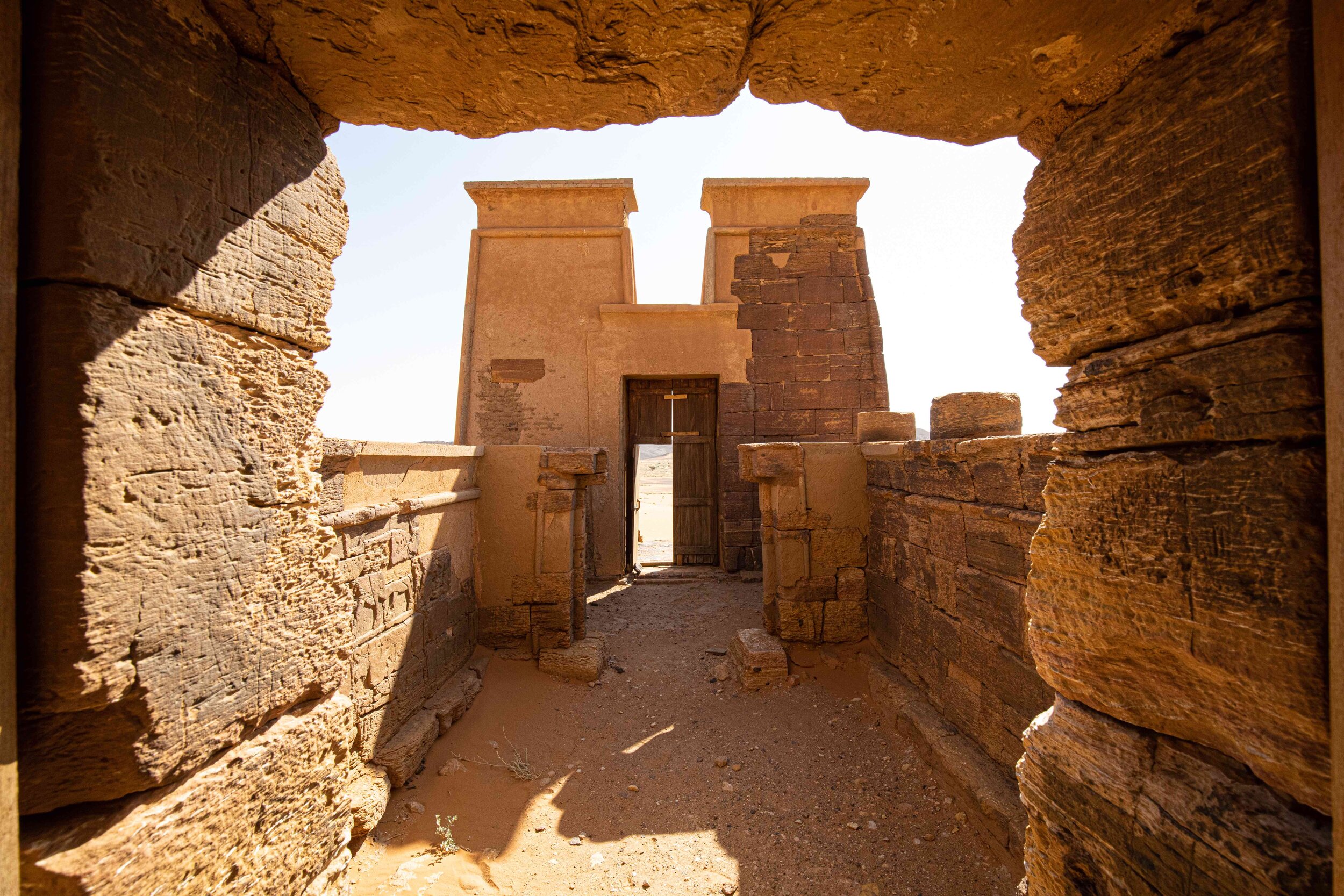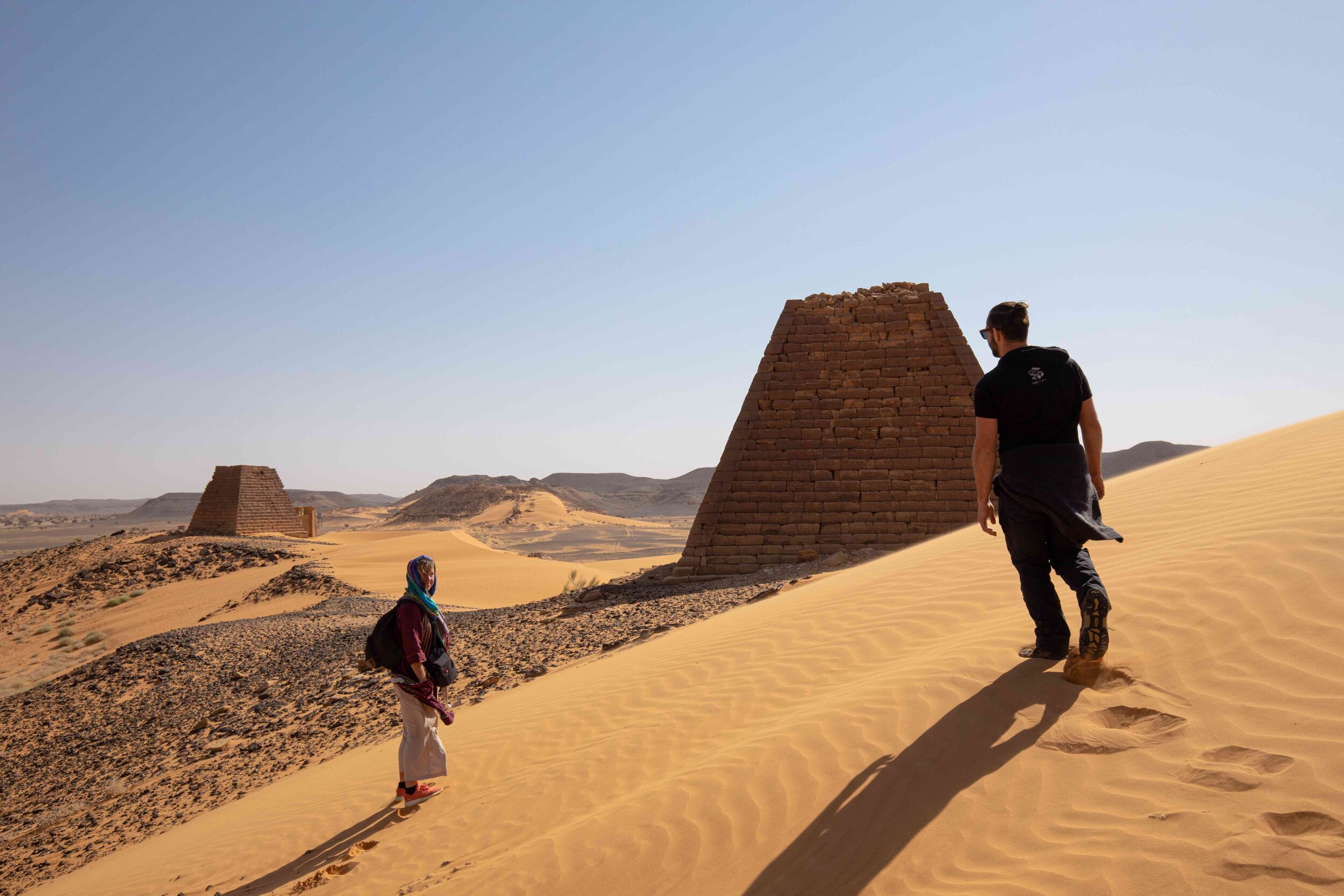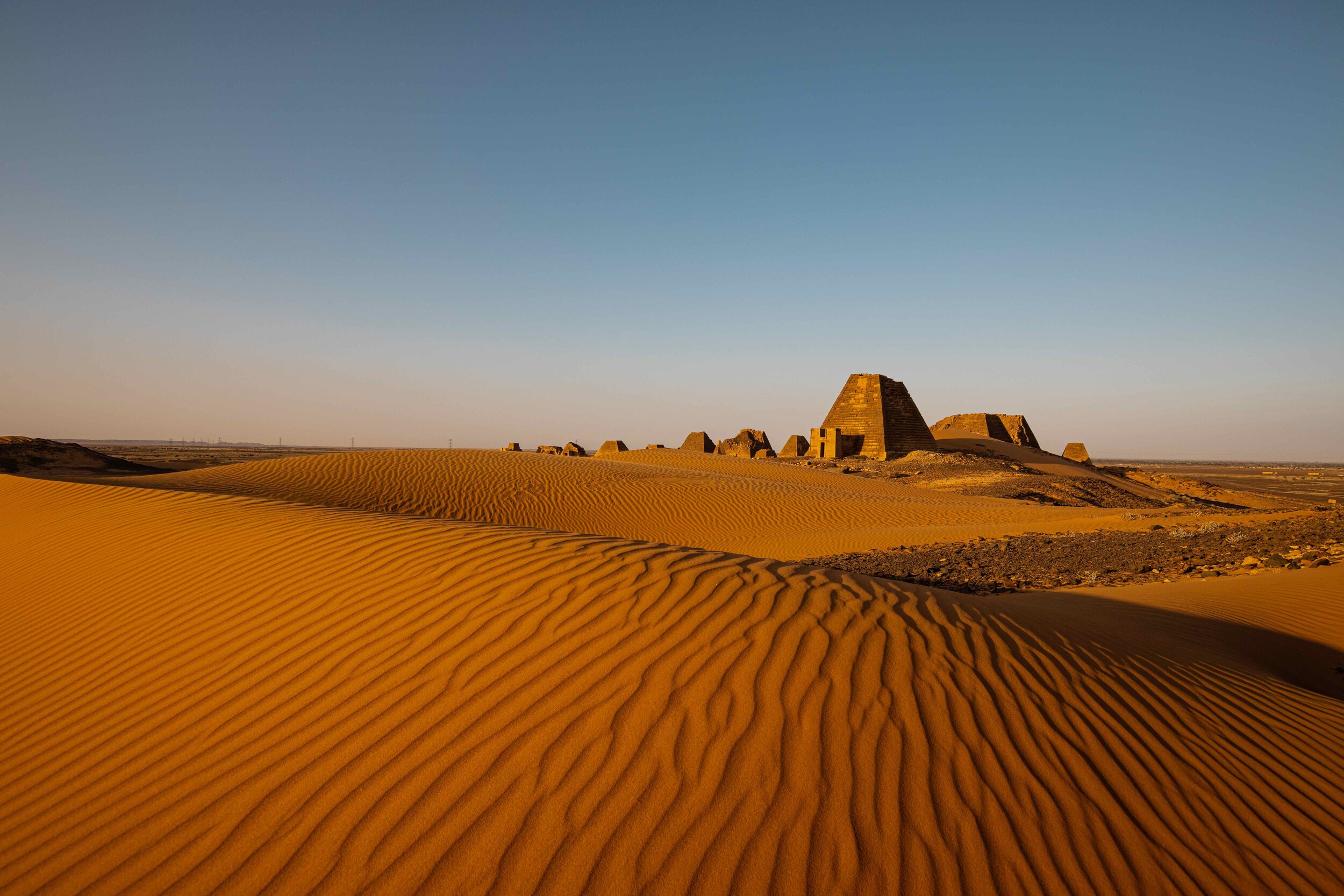
The Sudan
Less known - and definitely less understood - than its northern neighbour Egypt, the Sudan offers plenty of archaeological delights, against a backdrop of exceptional hospitality.
Beyond the many pyramids, there are palm plantations to explore by the Nile’s edge, exceptional SCUBA diving spots to be found, and bottomless cups of chai to be had over a chat at sidewalk coffee stands.

Where the Pyramids Outnumber the People
The Meroe Pyramids face into the east, guaranteeing a spectacular play of light on these ancient structures at daybreak.

Stunning Sanganeb
A couple of kilometres out to sea from Port Sudan, the Sanganeb Reef plays host to an ancient lighhouse, as well as colourful corals and hammerhead sharks. Best of all, you’ll have the dive sites here all to yourself.

Atop Jebel Barkal
The ruins of the Temple of Amun stretch out towards the Nile River from the base of Jebel Barkal

The Pyramids of Jebel Barkal
Without even hosting so much as a ticket office, the pyramids of Jebel Barkal stand sentry in the desert without a tourist in sight

Rush Hour at Meröe
Sudan’s most famous tourist attraction makes it easy to explore millennia of history at your own pace, without any daytrippers interfering with the view

The Palm Plantations of Nuri
The lush floodplains of the Nile provide fertile terrain for the cultivation of dates

From Sand and Stone
Meröe’s Pyramids have been both ransacked and renovated over time, with close-up inspections offering an opportunity to trace the cracks running through this site’s colourful past

Dawn in the Desert
Sometimes daybreak provides the perfect opportunity to take stock of the spectacular surrounds that inspired grandiose monuments to be built atop them in the first place.

The Foundations of Faith
The Great Enclosure of Musawwarat es-Sufra has stood tall in the Sahara since the third century BC, holding clues in the carvings of how the surrounding area has changed since

The Staircases of Sanganeb
The old lighthouse at Sanganeb was built by the British between 1958 and 1964, and today serves as a reminder of the Sudan’s recent colonial history

Streets of Khartoum
Like many major cities in Africa, Khartoum’s traffic requires giving up control to a system of organised chaos in order to make it through unscathed.

Peeking At the Past
The temple at the Musawwarat es-Sufra contains many carvings of wildlife that no longer exist in the area, from lion cubs to elephants, a reminder of these animals’ diminishing range across the continent

The Lion's Keeper
Preserving the carvings of the Temple of Apademak comes down to this resident caretaker. With Sahara sandstorms threatening to erode the Sudan’s history, keeping access to the temple under lock and key prevents the wind from writing over the walls.

The Cairo Connection
The hieroglyphs at Musawwarat es-Sufra hint at the region’s shared history with Egypt, thanks to the life-sustaining Nile which linked ancient Nubia to Cairo

Missing the Point
Meröe’s flat-topped pyramids tell the tale of their ransacking by Giuseppe Ferlini in the 1800s, who hacked off their tops on a search for hidden treasure

Shadows in the Sand
In the earning morning light, the pyramids of Meröe seem to drift atop the dunes like a mirage, as the wind sends shadows to play with the sand